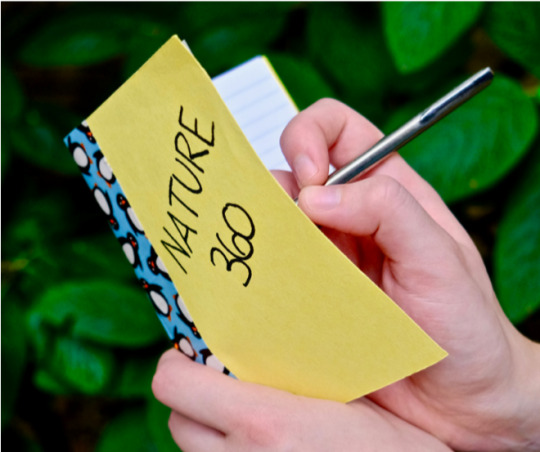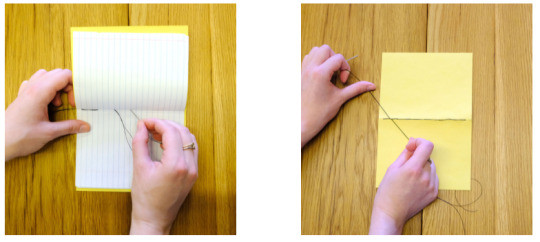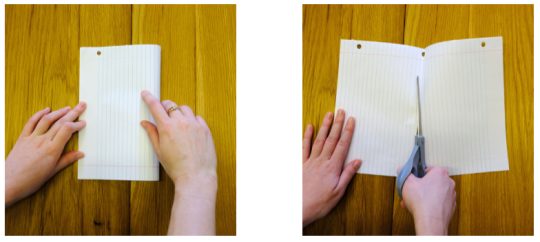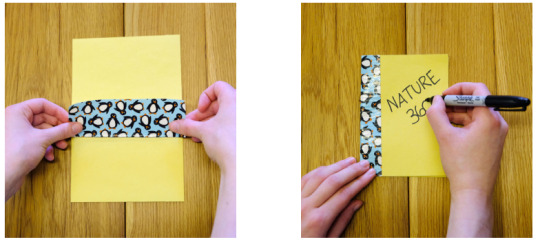
A key tool that naturalists use is a notebook to record their observations. This can be anything from what birds they saw on a walk, to drawing an insect they aren’t familiar with, to noting topics that they want to investigate online later. There aren’t any rules for what a good nature notebook should be, so why not make one yourself, with materials you already have in your house!
What You’ll Need
- 10 sheets of 8.5 in. x 11 in. lined notebook paper
- Construction paper
- Needle
- Strong thread
- Duct Tape
- Scissors
Directions
- Fold your papers in half so the top edge meets the bottom edge (“hamburger” style), and cut them in half along this line. Fold and cut the construction paper in the same way. You should have two sets of lined paper and two pieces of construction paper.
- Cut off the left edge of the paper, including the binder holes.
- Fold the set of lined paper in half so that the lines go from left to right. Fold the construction paper the same direction. Trim construction paper so that it is the same size as the lined paper.

- Place the set of lined paper inside the construction paper cover. Use the needle to poke holes along the fold from the inside through to the outside cover (4-6 holes an inch apart will do).
- Cut about 4 ft. of thread and thread the needle. Push the threaded needle through one of the holes you already made, starting at the bottom.
- Sew back and forth through the rest of the holes you poked. When you reach the top, sew back down through the existing holes. When you reach the bottom, knot off your thread and cut off the excess string. Your knot doesn’t have to be perfect, it’ll be covered up next.

- Cut a piece of duct tape the height of the notebook and adhere it to the construction paper along the spine.
- Now for the fun part- decorate it! You can use markers stickers, stamps, or anything else you have. Make it your own!

Upcycle and Share!
Do you have old half-filled notebooks from school? Tear out the remaining paper and turn it into a nature notebook. These instructions make two small notebooks, so you can give one to your friend, sibling, or keep a backup when your first one fills up.
Submit the observations from your Nature Notebook to the museum!
Explore nature together. Visit Nature 360 for more activities and information.
